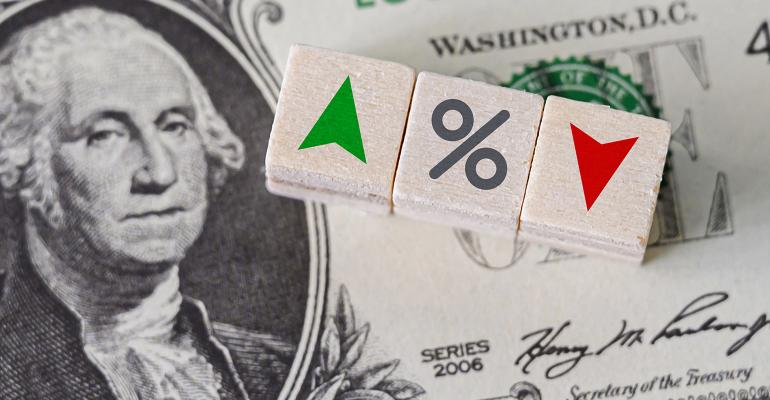(Bloomberg Opinion) -- When I am trying to understand the macroeconomy, I often find myself resorting to one of my favorite sayings: All propositions about real interest rates are wrong.
For starters, let’s define the real interest rate, or more properly a term series of real interest rates. If the long rate is published at say 6%, that is the nominal long rate. The real interest rate adjusts that figure for inflation, so if inflation rates are 4%, the real long rate is 6% minus 4%, or 2%.
Almost everything beyond that is murky.
During the 1990s, a series of tax hikes and changes in federal spending trajectories reduced the U.S. budget deficit. The goals were to restore fiscal prudence, lower real interest rates and boost private-sector investment. That all seemed to succeed, and economists went away confident that they understood not only real interest rates but also many other things.
Alas, we did not. Since the presidency of Bill Clinton, the U.S. has run staggeringly large budget deficits, and racked up trillions in government debt, including most recently from the pandemic. Yet real interest rates have continued to fall, often reaching into negative territory, especially for short-term rates. Naïve theory predicted that they should rise.
The law of demand is one of the sacrosanct principles of economics: If the price of apples goes up, the demand for apples will go down. Yet when real interest rates go up, it is not obvious that the demand to invest goes down, even if the numbers are adjusted for possible reasons why real interest rates might have changed in the first place. This raises a profound question: If the law of demand doesn’t apply, how well do we understand investment and real interest rates at all?
The puzzles deepen. There was a longstanding debate in economics about whether the U.S. Federal Reserve, using monetary policy, could affect real rates of interest. After extensive research, the conclusion was reached that the Fed can indeed have a marginal effect by supplying more liquidity to markets. Yet the effect is sufficiently small that there can be a plausible debate about whether, statistically speaking, it exists at all.
These days, however, the real federal funds rate measures as below -4%, based on measures of core inflation. No one doubts that the monetary expansions of the Fed, which have brought much higher inflation, are a major factor behind that shift. In other words, the Fed’s impact on real rates is far more potent now than in times past.
It gets worse yet. Most observers were not anticipating that expected short rates could fall and stay below -4%. Why hold those assets at all? I don’t have a good answer to that question.
Recently the term structure of interest rates has become inverted, by which it is meant that the short-term rates are higher than the long-term rates. Economists have debated for decades whether such a sign might be a good predictor of a recession. (The theory is that low long-term rates mean that future demand to invest will be low, a bearish sign.) Yet the current data are ambiguous. So not only are real interest rates often hard to predict, but they themselves are not typically clear predictive signals on their own.
There are international versions of these puzzles as well. Countries with high positive real interest rates have stronger real exchange rates than standard theory might predict. When it comes to exchange rates, real interest rates are more powerful than might have been expected — even though when it comes to investment, they are much less powerful. These puzzles remain unresolved.
It is a critical question why there are so many puzzles surrounding real interest rates. One view places the blame on how real rates are measured. For instance, if every person faces a different inflation rate, based on their own spending patterns, measured real rates may not reflect the true real rates that individuals face. Another possibility is that the very notion of interest rates is confounding to people, and the challenge of incorporating changing future rates into their decision-making is more confounding still.
Still, maybe I should slightly adjust my saying: Not all propositions about real interest rates are wrong. It does seem clear, for instance, that U.S. real rates have largely been falling for the last century. But beyond that? If you hear the phrase, “real interest rates,” take cover — and maybe even run the other way.
Related at Bloomberg Opinion:
- The Fed Is Basically Just Guessing About Interest Rates: Allison Schrager
- The Fed’s Actions Don’t Match Powell’s Words: Clive Crook
- The Fed Should Pick ‘Boomflation’ Over a Recession: Conor Sen
To contact the author of this story:
Tyler Cowen at [email protected]




